Osaka’s Danjiri Festivals: Beyond Kishiwada
One of the most iconic festival in Osaka’s Senshu Region are definitely danjiri festivals. The danjiri festival in Kishiwada held in mid-September is very famous, draws as many as 500,000 visitors to Kishiwada. People come from all over to see and even feel the energy of the danjiri festival. However, Osaka’s danjiri festivals take place not only in Kishiwada, but throughout the Senshu Region during the second week of October.
What is a Danjiri?
First things first, what is a danjiri?
“Danjiri” typically refers to the wooden structure with wheels that people can pull it and around a city. Danjiri also typically have two roofs, one large one small that looks like a traditional Shinto shrine roof. The people who ride on the top of the danjiri roof are called daikugata [大工方].

The giant wooden vehicles were originally an important part of a town/village/city’s rice harvest festival. These festivals, which still take place in south Osaka, are usally any time between mid-September to early October.
Mikoshi vs Danjiri
An iconic component of many Japanese festivals are large floats called mikoshi. Unfortunately, it is not uncommon for the untrained eye to mistake a mikoshi for a danjiri, especially since many different festivals can take place on the same day and even in the same area.
The clearest distinction between a danjiri and mikoshi, is that a mikoshi is carried, not pulled.

Another big difference between them is that mikoshi often belong to a particular shrine, while a danjiri belongs the community. Furthermore, the primary function of a mikoshi is carry the idol of a shrine’s god around the city for celebratory purposes and a danjiri does not contain any such idol.
The History of Danjiri Festivals
Because danjiri festivals are not an official part of a shrine’s ceremony, there aren’t any records about when they began. Some people think the first festival was in Sannomaru Shrine, an Inari shrine, near Kishiwada Castle in 1703.
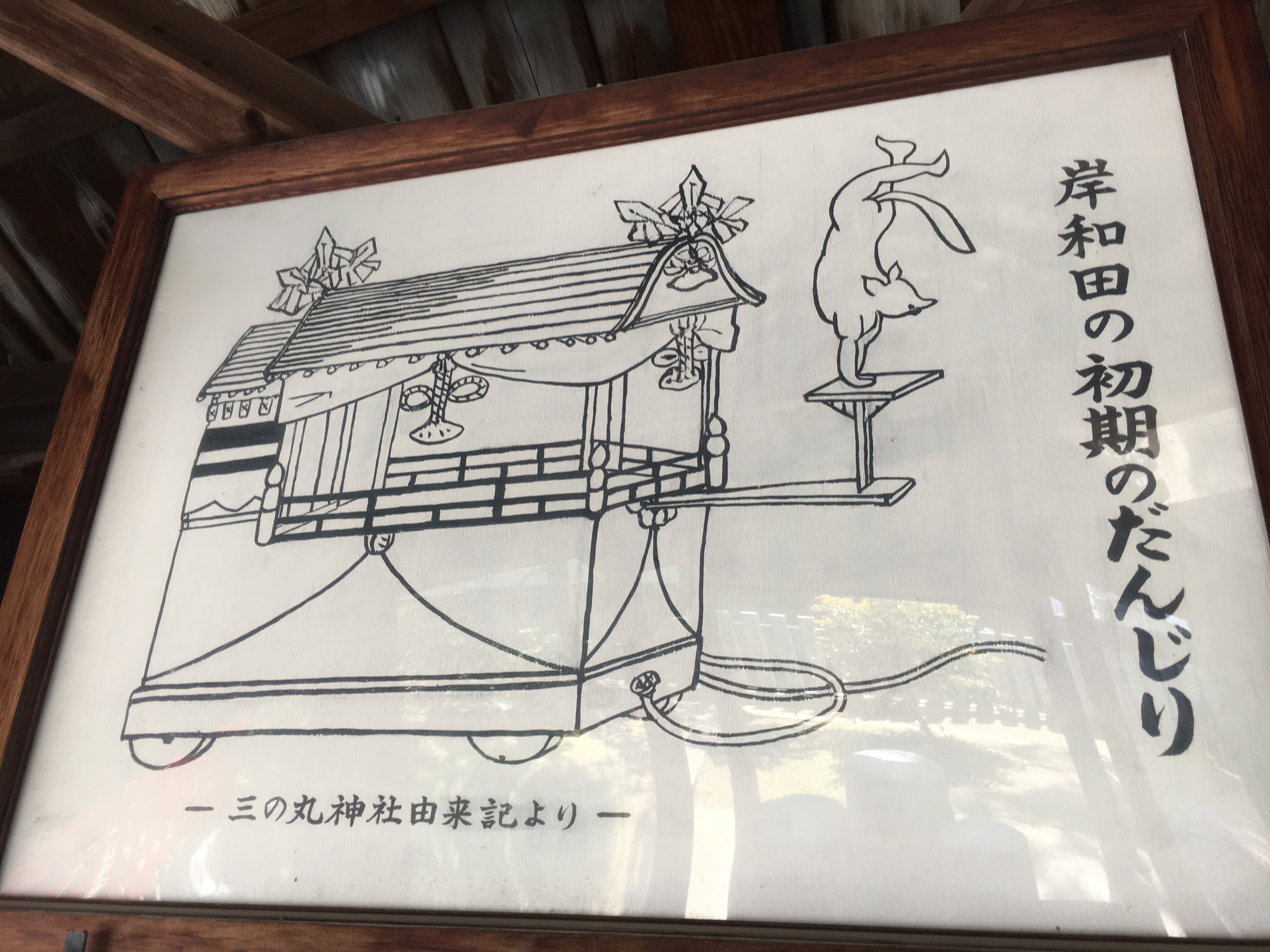
Conversely, there are a number of other sources that strongly indicate that the first danjiri festivals in fact originated in Sakai City, where they were very popular for centuries. However, one year a large fight broke out during the festival and several people died as a result. Feeling that the festival had gotten out of hand in 1896 the Japanese government banned the festival from being held in the city’s central district. Even today, no danjiri festivals take place in the center of Sakai City.

All we know for sure is that danjiri used to be much smaller than they are today. It was only after the end of either the Meiji or the Edo Period that the current size danjiri became common. Additionally, it was not until the end of the Showa Period (1989) that the media started paying attention to danjiri festivals, making them popular all over the country.
Danjiri, a Close Up
Yarimawashi
Danjiri in the Senshu Region typically do what is called a yarimawashi [やりまわし], in which people run around a corner pulling the danjiri quickly behind them.
Yarimawashi is definitely one of the most famous features of the danjiri festival because it is both dangerous and exciting to see this large wooden structure dashing around the corner at top speed.
It most certainly is dangerous for any number of reasons:
Sometimes the danjiri topples over because either it is going too fast.
The people on top roof fall off.
In the worst cases the danjiri crushes into a building or other obstacle.
Though as long as no one is injured and the danjiri can still move, they typically go on their way as if nothing ever happened.
History on Wheels
Though many people pay attention to the people on roof or when the danjiri does a yarimawashi, the truly spectacular thing about the danjiri, lies in the danjiri itself. If you have a chance take a close look at a danjiri, you can see they are covered with beautiful elaborate carvings. Each danjiri has a different theme and the carvings detail things like historic wars or even local folklore! Because of these beautiful and expensive carvings people sometimes call danjiri “a moving history hand-scroll.”
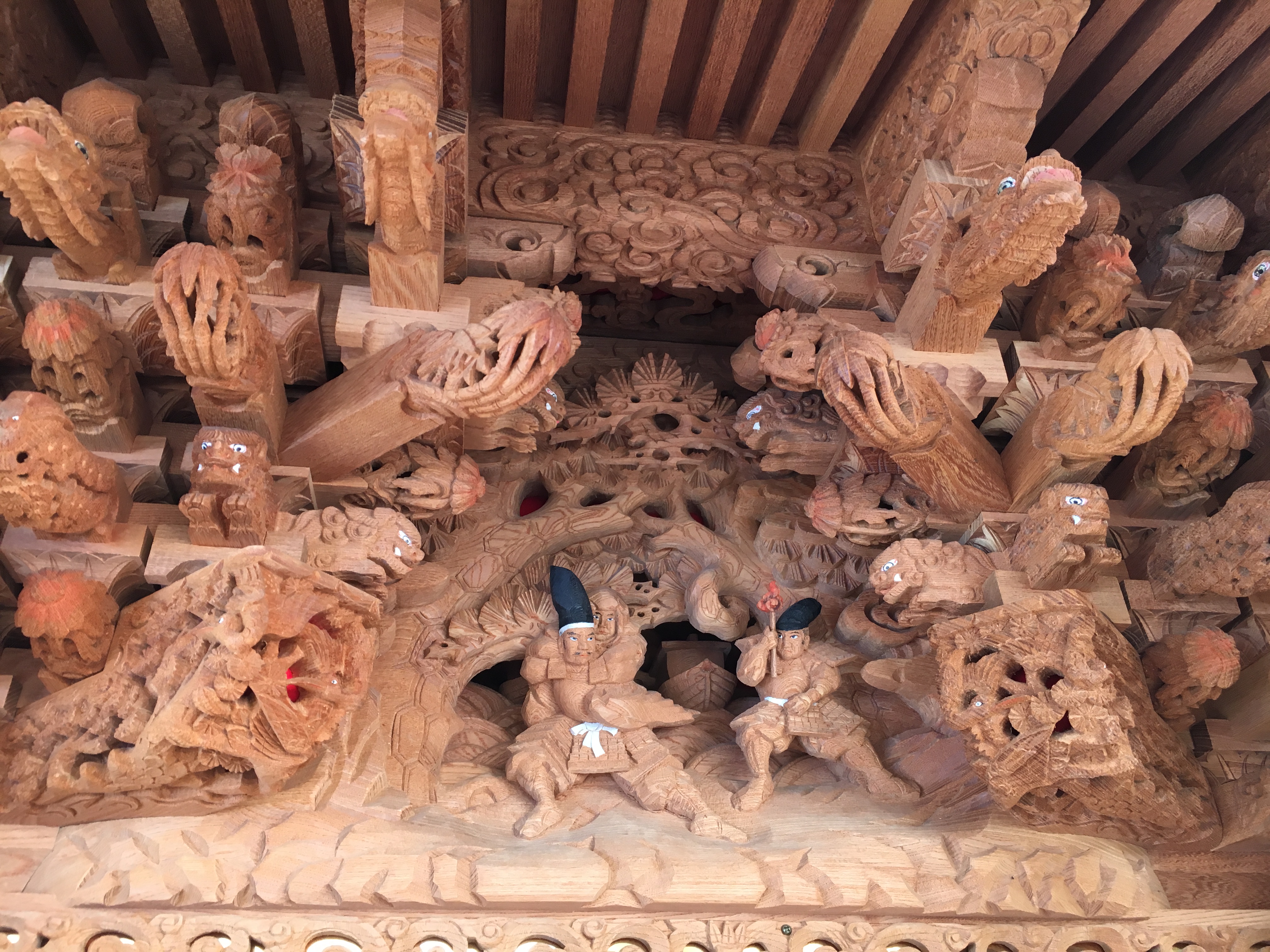

Kami-Danjiri and Shimo-Danjiri
In the Senshu Region, there are two kinds of danjiri: kami-danjiri and shimo-danjiri. Kami-danjiri are common in the northern most area of the Senshu Region; specifically in Izumiotsu and its surrounding cities. Shimo-danjiri on the other hand, always refer to the type of danjiri found in and around Kishiwada.
Characteristics
When you compare Kami-danijiri and Shimo-danjiri, you can see there are many differences between them.
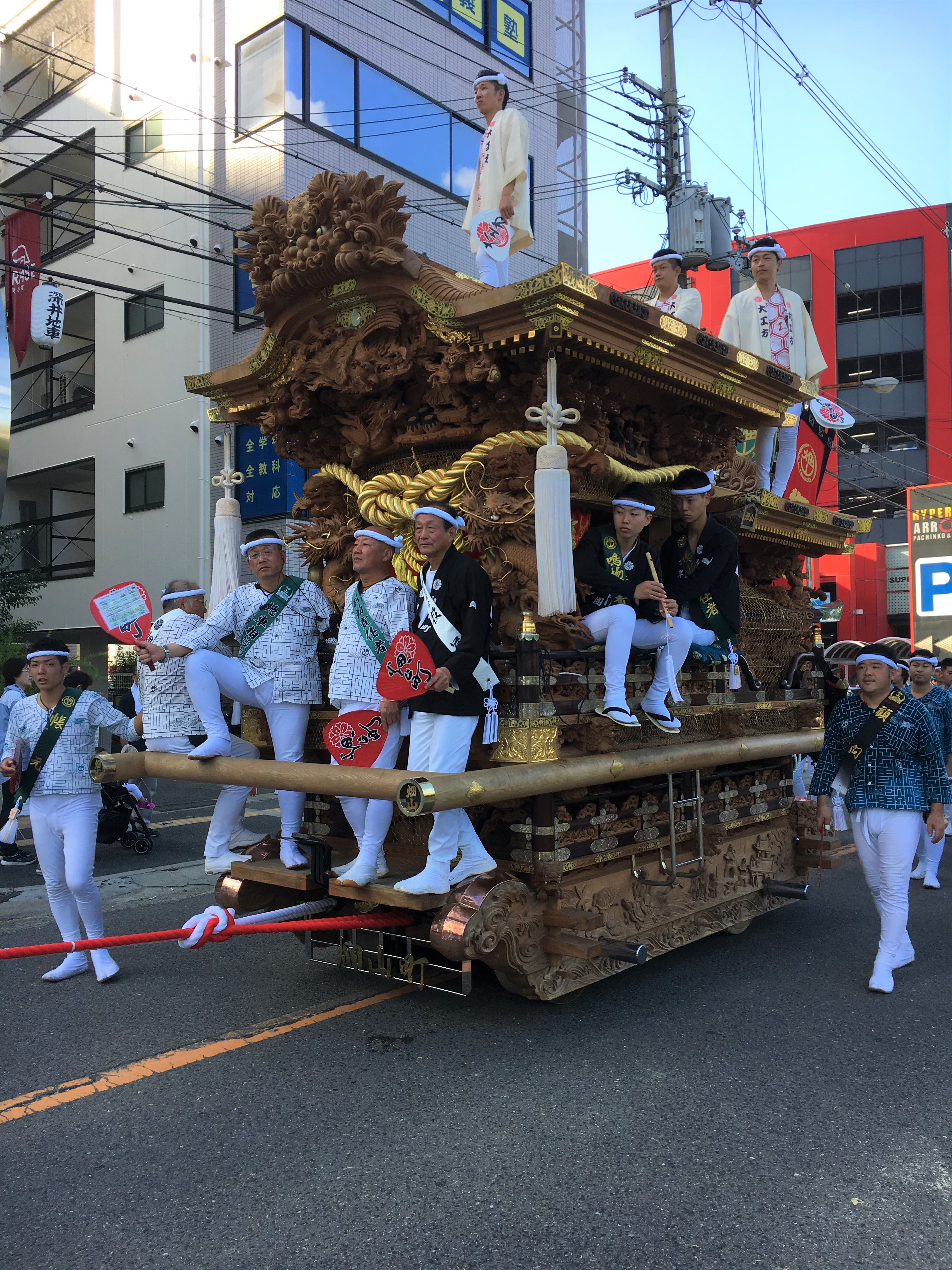

Kami-danjiri have a bar surrounding the main part of the danjiri, while the shimo-danjiri does not have any. Also, kami-danjiri typically have a lion on the front of its roof aka a shigami that is absent in shimo-danjiri.
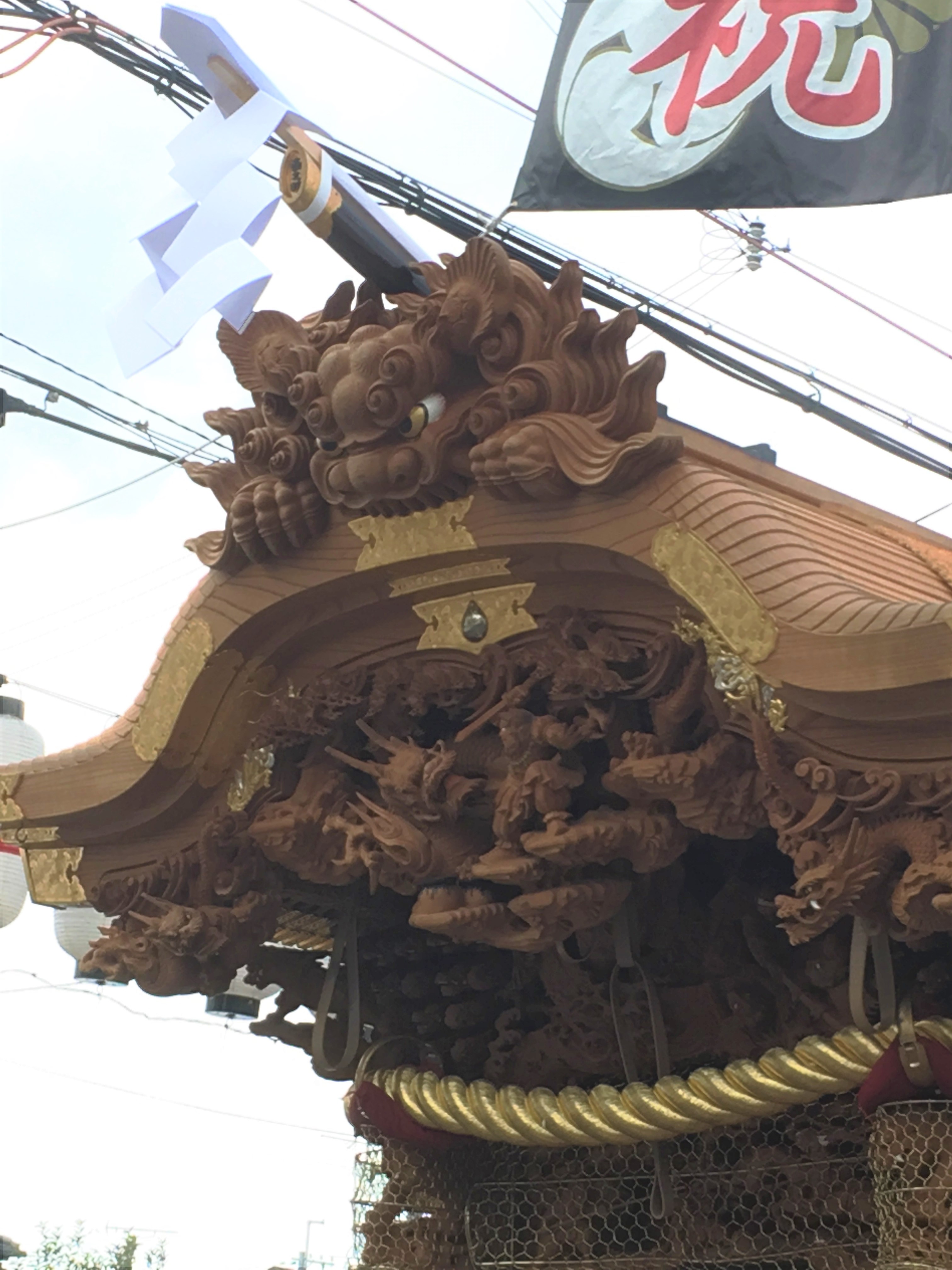
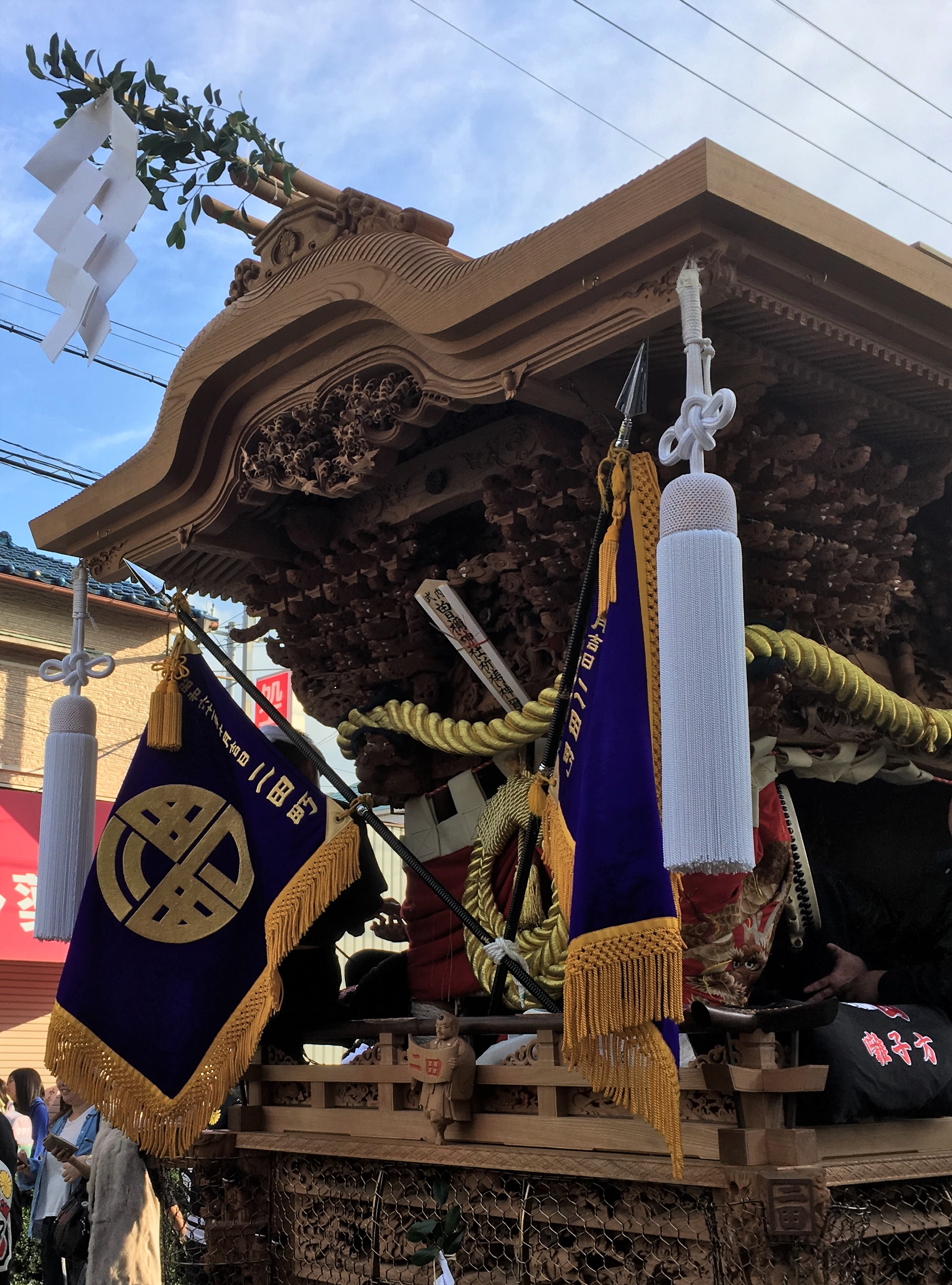
Steering
There are also a number of differences in how and the location of the steering mechanisms on each of these danjiri. The most obvious differences in the main steering column called teko [梃子] is located in the back of a kami-danjiri while shimo-danjiri have steering columns in both the front and back.

For many years kami-danjiri were the predominant style of danjiri in north Senshu region. Shimo-danjiri, on the other hand, were only in Kishiwada. However, danjiri suffer a tremendous amount of wear and tear and require a lot of maintenance. Typically, a city will replace a danjiri every 80-100 years. Due to this regular turnover, shimo-danjiri are gradually replacing kami-danjiri. Not only are the shimo-danjiri easier to steer, they are generally more popular.
Danjiri Festivals
Local Variations
Kishiwada’s danjiri festival is certainly the most famous, and due to its popularity, will always draw extremely large crowds. You might not even be able to get a good view of the danjiri! In order to really see the danjiri in action, it might be worth your while to consider going to another danjiri festival held in a neighboring town. Those nearby festivals will even have their own local flair! Unfortunately, the main event of these festivals are usually all held on the same day., except one in Kishiwda. If you really want to go to more than one festival, you will need to plan carefully.
Izumiotsu [泉大津]
In Izumiotsu, they ram their danjiri together in what is called kachiai [かちあい]. These kachiai are very popular and draw large crowds into the street to watch these giant wooden cars slam in to each other.

Fukai [堺市中区深井]
All danjiri festival do what is called hiire eikou [灯入れ曳行] where they cover the danjiri in lanterns after the sun sets.

Once the lanterns on are on the danjiri, it will no longer attempt yarimawashi. This is simply because it is more dangerous at night. Fukai, seems to enjoy a bit of risk taking and continue performing yarimawashi up until the festival ends which usually around 10 o’clock at night!
Hannan City [阪南市]
South of Izumisano in places like Hannan City, they use a special kind of danjiri called a yagura.

Truthfully the do look very similar to danjiri but have a few key differences:
- Yagura have much bigger wheels than danjiri and only two of them.
- Danjiri have several people on the top roof who jump around and help to navigate the danjiri. Yagura do not.
- Yagura have beautifully detailed tapestries on their sides.
- Danjiri and yagura both have large drums. However a danjiri’s drum is located on the inside, while the yagura’s is located on the outside.
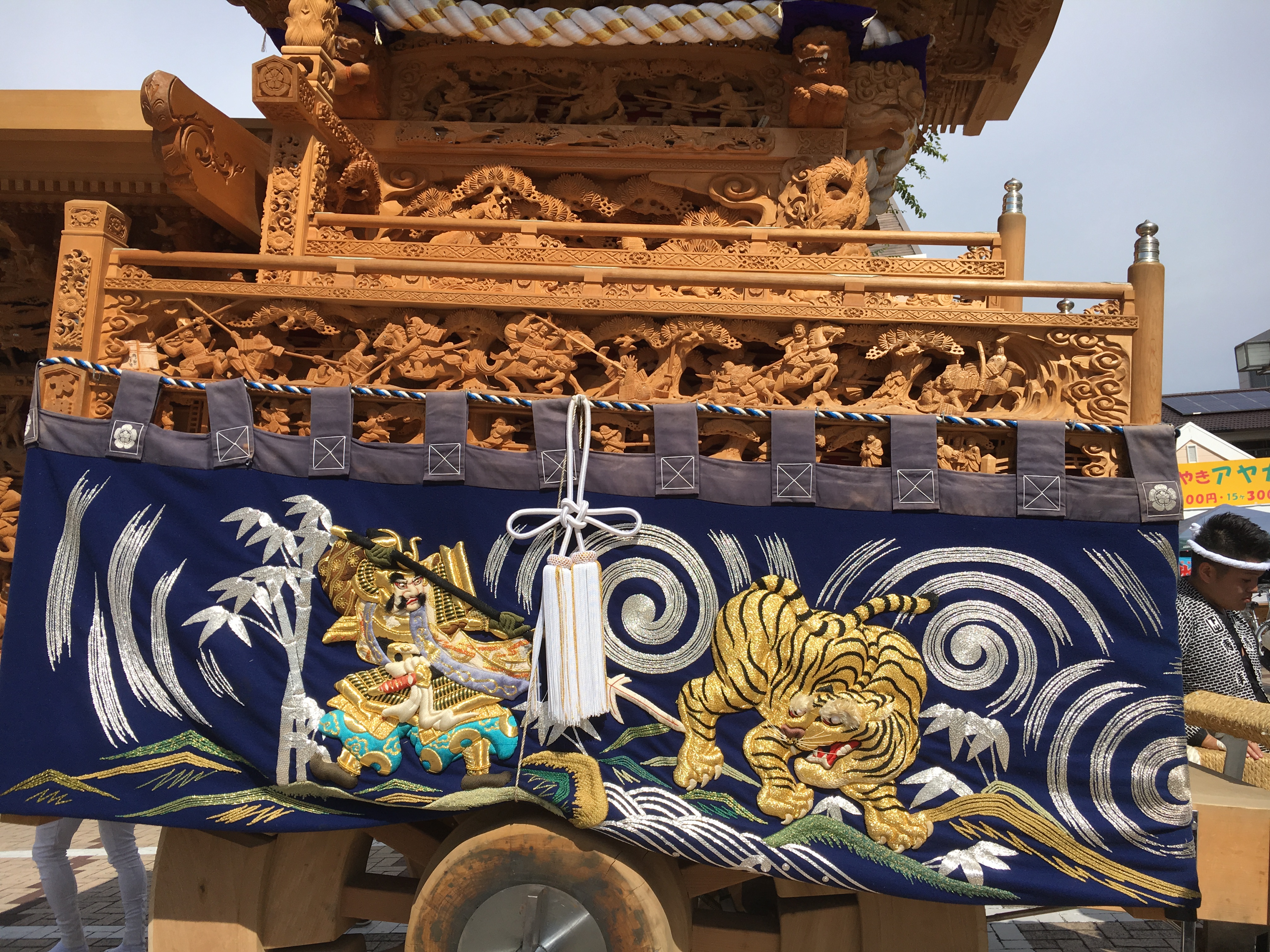
Hirano [大阪市平野区]
If you are in Osaka City during the summer you still have a chance to see a danjiri festival! Hirano, located just a few short minutes from the heart of Osaka City, hold the largest danjiri festival within Osaka’s city limits. Hirano’s danjiri lack a teko, so the danjiri go a bit slower than the others on this list. But it is still a very high energy festival!
Danjiri festivals are a great experience, as well as tried and true part of Osaka’s rich culture. Even the smallest cities take great pride in this opportunity to highlight their histories and folklore. Their pride and enthusiasm for these festivals will ensure this tradition for many years to come.
Coming next time,
Understanding Shinto Shrines,
The adventure continues…

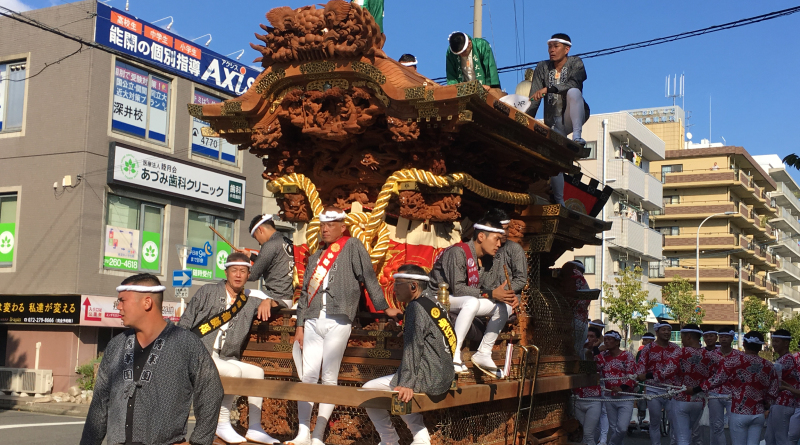
Leave a Reply